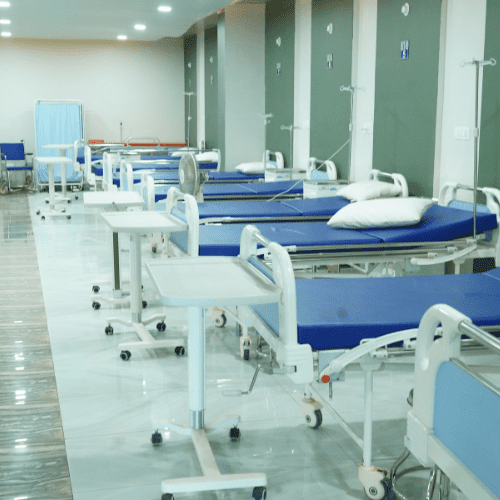Tuberculosis (TB) is one of the oldest infectious diseases known to humanity, yet it continues to pose a daunting challenge to public health systems around the globe. As an airborne disease primarily affecting the lungs, TB is caused by the bacterium Mycobacterium tuberculosis and is a leading cause of mortality in many parts of the world. Despite advancements in medical science and public health initiatives, TB remains a priority for global health organizations, as it disproportionately affects vulnerable populations. Understanding the multifaceted challenges faced in TB control is essential for formulating effective strategies and policies aimed at combating this persistent epidemic.
The Complex Landscape of Tuberculosis: Recognizing Global Challenges in Control Efforts
The ongoing prevalence of tuberculosis can be attributed to a variety of interconnected factors that impede effective control measures. Socioeconomic disparities play a crucial role, as individuals in impoverished communities are often unable to access adequate healthcare services. These populations frequently experience high rates of malnutrition, which weakens their immune systems and increases susceptibility to TB infection. In many instances, the lack of financial resources results in delayed or incomplete treatment, further perpetuating the cycle of transmission. Furthermore, inadequate healthcare infrastructure in low- and middle-income countries compounds these issues, creating an environment in which TB thrives.
Another significant challenge in controlling TB is the emergence of drug-resistant strains, particularly multidrug-resistant TB (MDR-TB) and extensively drug-resistant TB (XDR-TB). These resistant forms of the bacteria complicate treatment regimens, often requiring longer courses of expensive medications that are not always available in less affluent settings. The increasing prevalence of drug resistance underscores the urgent need for enhanced surveillance, research, and development of new diagnostic tools and therapeutics. As healthcare systems struggle to manage these resistance patterns, the global community must recognize the critical implications of drug resistance for TB control and prioritize efforts to prevent its spread.
The stigma associated with tuberculosis also poses a formidable barrier to effective control efforts. Many individuals diagnosed with TB experience discrimination, leading them to avoid seeking medical care due to fear of judgment or social ostracism. This stigma is particularly pronounced in communities where TB is associated with poverty or other social issues. Delayed diagnosis and treatment as a result of stigma not only prolongs individual suffering but also facilitates ongoing transmission within communities. Addressing the social determinants of health, including stigma, is essential to garnering community support and encouraging individuals to engage with healthcare services.
Strategies for Enhanced Tuberculosis Control: Addressing Systemic Challenges through Integrated Approaches
Given the complexity of the challenges surrounding tuberculosis control, it is imperative to adopt integrated approaches that consider both the medical and social determinants of health. One of the foundational strategies involves enhancing diagnostic capabilities, particularly in remote and underserved areas where healthcare resources are limited. Implementing rapid and accurate diagnostic tests can facilitate early detection and treatment initiation, thereby reducing transmission rates. Furthermore, expanding access to these diagnostics is crucial to ensure equitable healthcare for all populations, particularly the most vulnerable.
Public health education campaigns play a pivotal role in combating stigma and fostering a supportive environment for individuals affected by TB. Through targeted messaging and community engagement, these campaigns can raise awareness about the disease, its transmission, and the importance of seeking timely medical care. Educational initiatives should focus not only on the biological aspects of TB but also on dispelling myths and misconceptions that contribute to stigma. By equipping communities with accurate information, public health efforts can encourage individuals to seek diagnosis and treatment without fear of discrimination.
Strengthening healthcare systems is another critical component of a comprehensive TB control strategy. This includes training healthcare providers to recognize and manage TB cases, particularly drug-resistant forms, as well as securing a steady supply of essential medications. Collaboration among governments, non-governmental organizations, and international agencies is vital for mobilizing resources and sharing best practices. Additionally, integrating TB control efforts with existing health programs that address other communicable diseases, such as HIV/AIDS, can optimize resources and improve overall health outcomes. An integrated approach ensures that TB control measures are not implemented in isolation, enhancing their effectiveness and sustainability.
The challenges in tuberculosis control are multifaceted and deeply rooted in various social, economic, and healthcare-related factors. Acknowledging these complexities is the first step towards developing effective and sustainable strategies for combating TB. By employing integrated approaches that enhance diagnostic capabilities, reduce stigma, and strengthen healthcare systems, the global community can work towards overcoming these challenges. The fight against tuberculosis requires a collaborative effort, with stakeholders across sectors uniting to address the systemic barriers that hinder effective control. Ultimately, a comprehensive and coordinated response will be essential for making significant progress towards TB elimination and improving health outcomes for millions affected by this disease.



